"The day when the Rising Sun shall proclaim our victory in India is not far off."
-Lieutenant-General Mutaguchi's proclamation to the Japanese 15th Army, 18th February 1944.
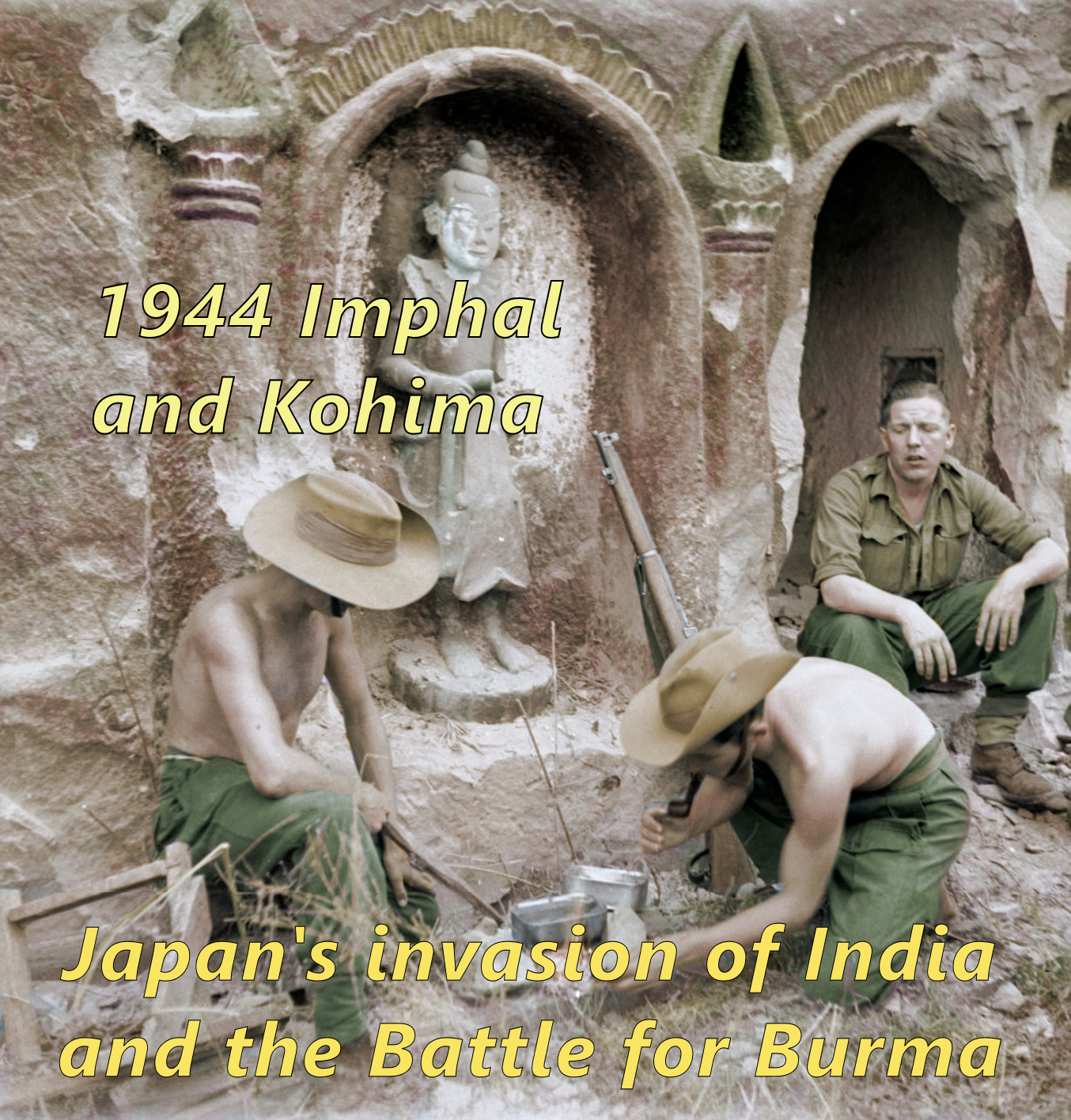
Axis Plans
It is March 1944 and it is nearly two years since Japan's lightning conquest of Burma. Since then, the frontlines have remained largely static as both sides have lacked the ability to launch more than regional offensives.
Most recently, a Japanese advance in the Arakan region on the coast attempted to draw British reserves away from the frontier with India to the north. The attack was unsuccessful, though this has not stopped Lieutenant-General Kawabe, head of Japan's Burma Area Army, from planning another offensive.
Kawabe knows that the Allies are preparing to launch their own offensive into Burma, and he is therefore preparing a pre-emptive strike to disrupt Allied plans. Ambitious to win fame and glory, Kawabe hopes that if this attack is successful, then it will be the start of a bigger and more far reaching offensive, one that can conquer India, isolate China, and achieve a war-winning victory!
Operations in Burma
The Japanese aim is to advance at top speed to isolate Imphal while taking Kohima to its north. The British and Indian forces in Imphal will then be destroyed, facilitating an advance via Kohima to Dimapur.
With Dimapur in Axis hands, supply to Allied forces in north-east India will be cut, thus frustrating General Stilwell's attempts to strike south into Burma with a mixed US-Chinese force in the Hukawng Valley.
In addition, should Dimapur fall, US supply planes will no longer be able to supply the Chinese with war materiel, and this could have a catastrophic effect on China's ability to continue in the war.
Kawabe hopes to capture all objectives before the Monsoon begins in May, as operations will slow down thereafter, and the winner will be determined no later than the 1st June 1944.
Subhas Chandra Bose and the struggle for Indian Independence
Taking part in the offensive are also units of Subhas Chandra Bose's Indian National Army (INA) who he is encouraging to fight a revolutionary war for 'Liberty or Death' with the slogan 'Chalo Delhi' (onward to Delhi) in the hope that they can trigger the end of the Raj, constituting India as an independent state in the process.
The Axis also have some units belonging to the collaborationist State of Burma in reserve, and these can be brought forward as necessary to guard the lines of communication.
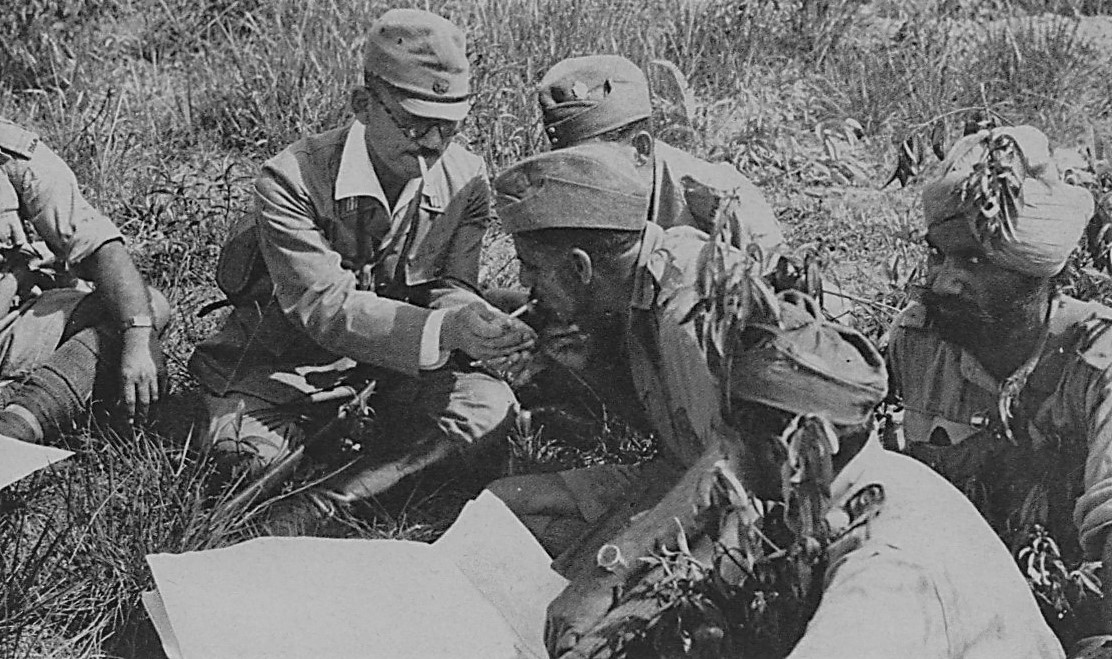 Japanese and Indian soldiers share a cigarette during a break in operations
Japanese and Indian soldiers share a cigarette during a break in operationsAllied Plans
General Slim and the Defense of India
Lieutenant-General Bill Slim, commander of the Fourteenth Army, needs to hold Imphal, Kohima and Dimapur in order to frustrate Japanese plans. Reinforcements will be arriving throughout the campaign, and these can be marched into battle, moved by rail, or even flown straight into action from Airfields near Comilla.
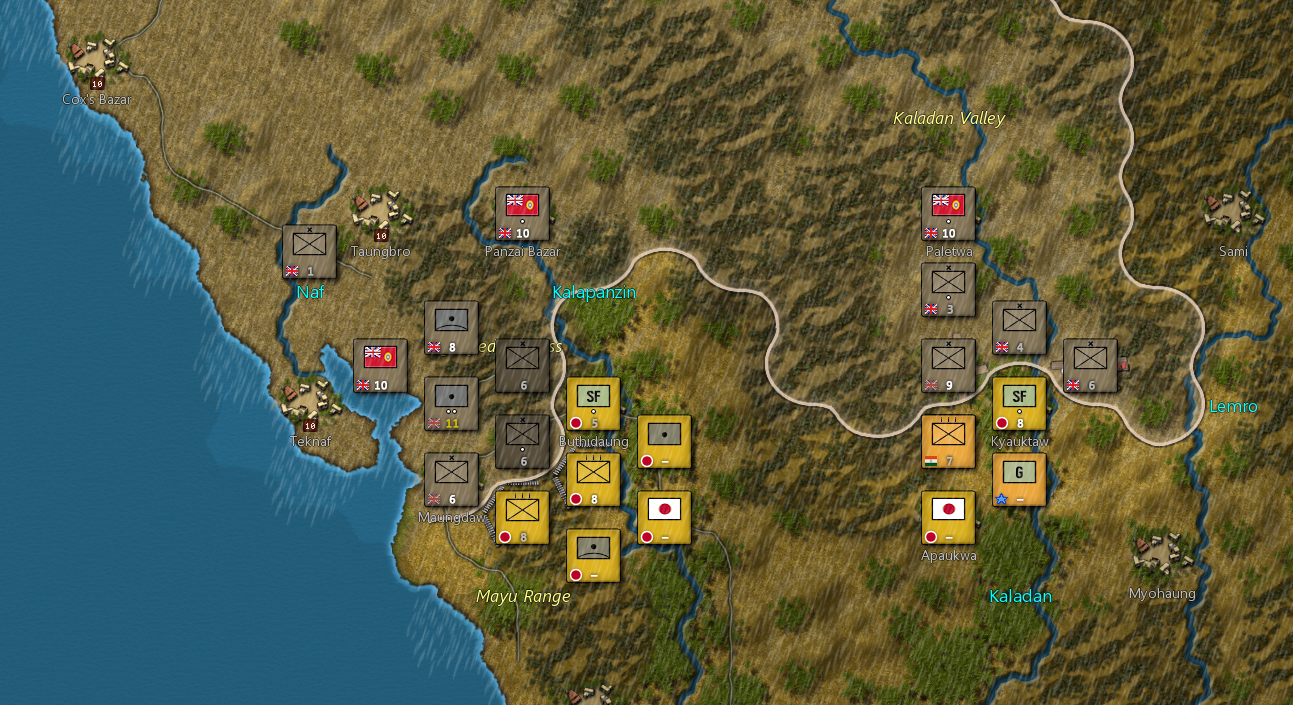 Fighting in the Arakan
Fighting in the ArakanJoseph Stilwell and the Burma Road
While battle rages to the west as Japanese forces invade India, Japanese possession of Burma is itself under threat from US and Chinese forces who are advancing south into the country.
These forces are under the command of "Vinegar Joe" Stilwell, and they consist of two Chinese infantry divisions, a Chinese Tank Brigade, and US troops in the shape of Merrill's Marauders aka Mars Force.
Stilwell's mission is to seize Myitkyina and reopen the Burma Road, as this will enable the movement of supplies by land to China, providing the country with the means to win the war against Japan in East Asia.
Orde Wingate and the Chindits
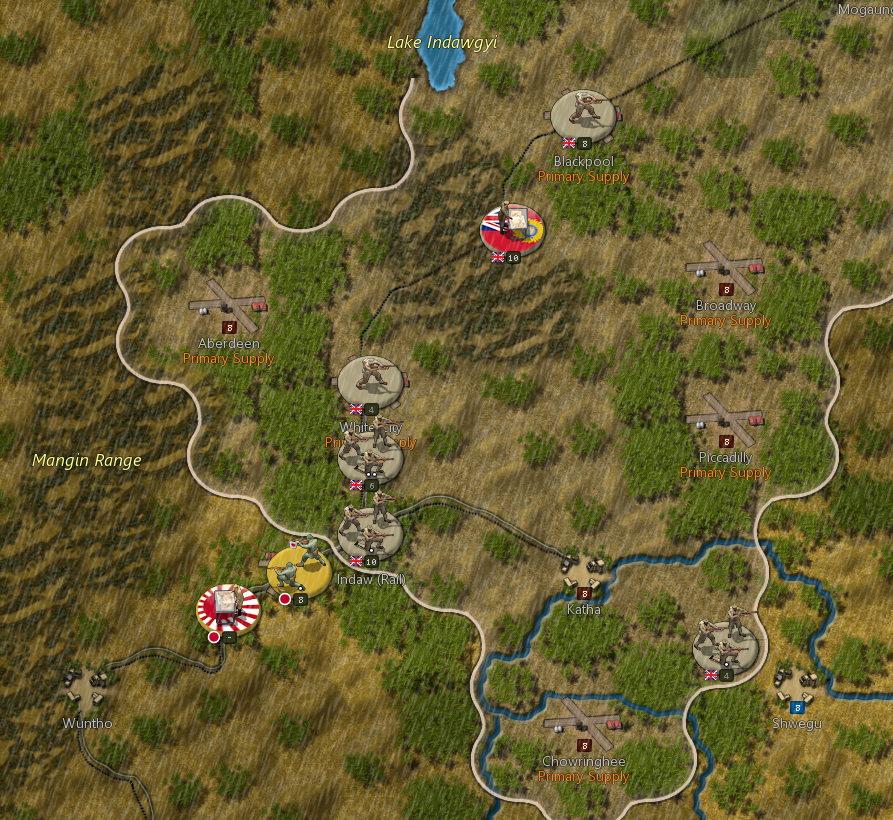
Chindits advance on Indaw (Rail)
Additionally, the Allies have a trick up their sleeve in the shape of Orde Wingate's Chindits.
Under the codename Operation Thursday, Wingate's forces are flying into landing grounds deep inside enemy territory in order to assist the US-Chinese advance on Myitkyina. It is intended that this will in turn enable the Yunnan Chinese to attack and link up with Stilwell.
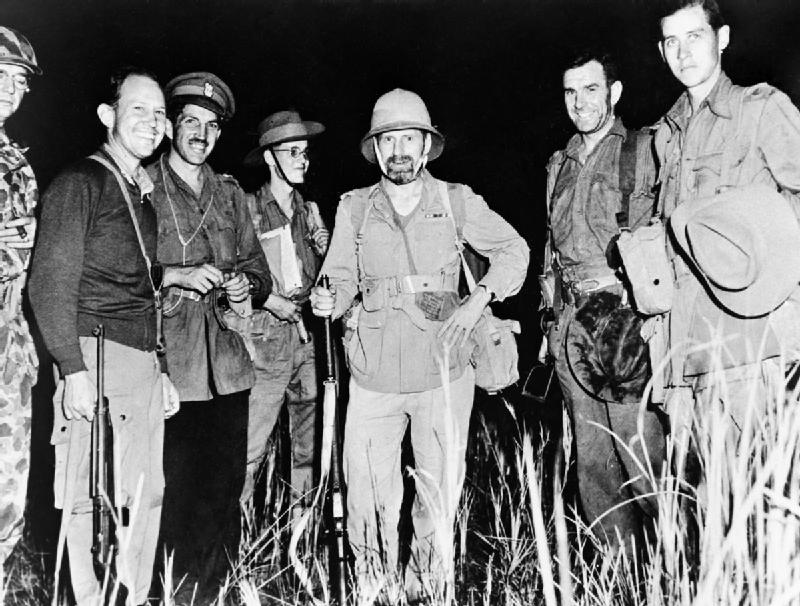
Orde Wingate during the Burma Campaign
China: The Yunnan Front
General Wei Lihuang commands Y Force based in Yunnan Province, guarding the western route into China. Although his army does not begin with the potential to launch an offensive, this will change as the campaign proceeds and reinforcements arrive, opening up the opportunity of launching an attack to assist the advance of Stilwell's forces. This could put the Japanese under immense pressure, and if an advance is successful, Wei should aim to liberate Wanting so as to help facilitate the reopening of the Burma Road to China.
In 1944 some Chinese divisions were flown from China to northern India, and this is also a possibility here, so if desired, Stilwell can be reinforced in order to increase the possibility of an Allied victory.
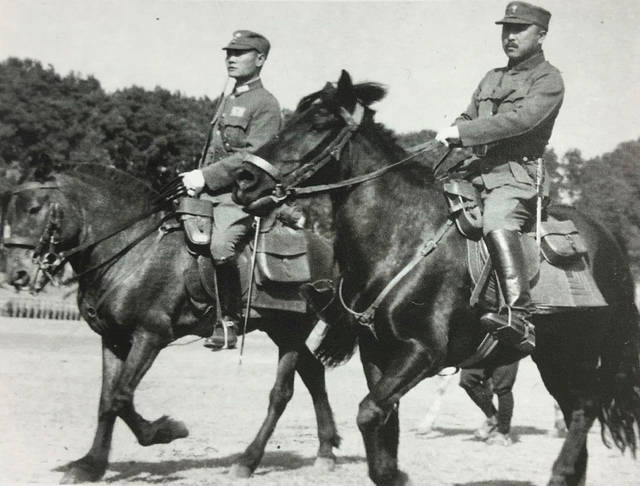
General Wei Lihuang
The Importance of the Burma campaign
During the campaign, Major-General Tanaka encouraged the Japanese 33rd division with the words 'Now is the time to capture Imphal... on this one battle rests the fate of the Empire'.
The Japanese weren't the only ones to consider that their offensive had the potential for a great victory. Writing later, General Slim described how a Japanese conquest of Dimapur would have left China 'completely isolated' and forced 'into a separate peace', while India 'would fall, a glittering prize, into their hands'.
An Axis victory in this region would not have halted the US island hopping campaign in the Pacific, though it would have seriously impeded China's ability to wage war.
The failure of the Axis offensive into India was decisive in ending Japanese offensive hopes in this theater, while paving the way for the Allied offensive that completed the liberation of Burma in 1945. At the same time, as Slim recalled, it 'smashed for ever the legend of the invincibility of the Japanese Army'.
This campaign provides you with the opportunity to re-fight this epic and, for the Axis, potentially war winning campaign. Can you advance successfully into India, paving the way for the collapse of the Raj? Or will you lead a skilful Allied defence that stops the Axis advance in its tracks?
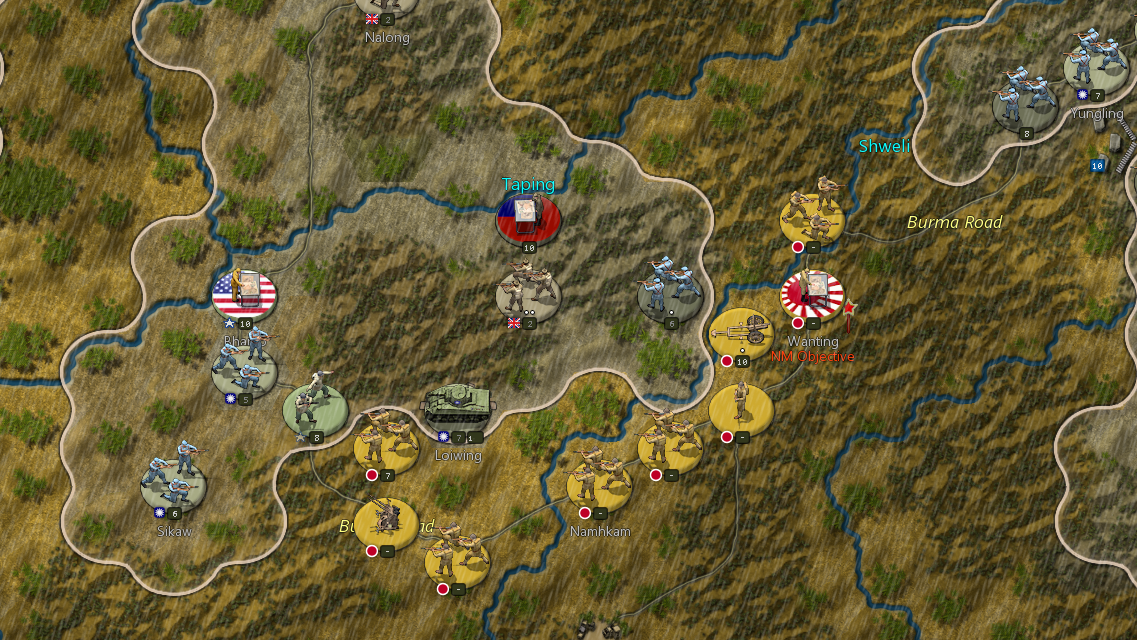 US, British and Chinese forces advance on Wanting
US, British and Chinese forces advance on WantingRecommended Further Reading
- Stillwell the Patriot by David Rooney
Defeat to Victory by Bill Slim
Japan's Last Bid for Victory by Robert Lyman







